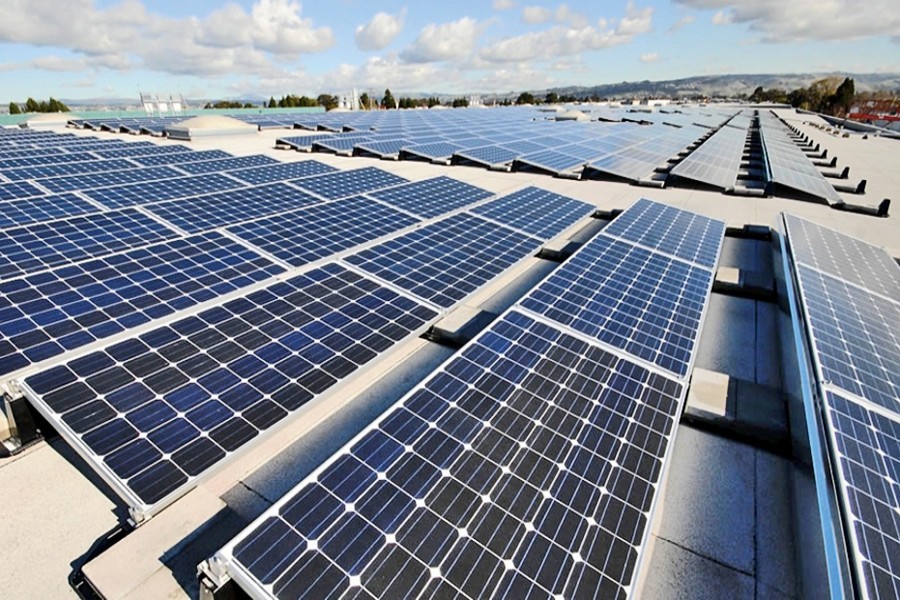
Published :
Updated :

The Cabinet's approval last week for setting up six solar and wind power plants capable of generating 257 megawatts (MW) of electricity highlights the recognition accorded to the importance of alternative sources of energy, especially that of solar, by the government. Of the six plants, five will use solar power and the remaining one wind power. No doubt, with the electricity added to the grid, the contribution of solar power to the country's national grid will be considerable, that too at reasonable prices.
In fact, the country has already made a breakthrough in the use of renewable energy from increased use of solar power. So far, although mostly off-grid, it does cater to the demand of vast sections of the population who otherwise are not in a position to access grid electricity. This has been mainly due to the flourishing of the Solar Home Systems (SHS) across the country, particularly in remote rural areas. Most of the char (islet) and island locations and low-lying haor areas are benefiting hugely from the technology. While initially, for most users, installation of SHS was meant to have their houses well lit, the technology soon emerged to change their lifestyle by adding value to their economic life, catering to critical needs such as irrigation among others. Small businesses, hitherto unthinkable in those locations, are evolving with the support of the technology. According to a report of the Paris-based energy think tank REN21, as of 2017, more than six million SHS and kits were in operation worldwide, with 25 million people benefiting from them. Bangladesh, the largest SHS market in the world, now has more than four million units installed.
With the commencement of grid connectivity under the aforementioned projects in the near future, the country is set to gain substantially from both on-grid and off-grid power. Until recently, it was mostly the off-grid SHS that dominated the solar power usages in the country. Strengthening the national grid by solar generated power is thus most welcome. A report published in the FE says the approved solar plants are going to be set up with investments from foreign consortiums and local investors in the form of joint venture. Coming together these plants will mean a lot for the country's power generation. It may be recalled that in September last year, the country's largest solar power plant went into commercial operation. Situated at Hnila, Teknaf, the plant has a capacity to produce 28 MW and will feed 20MW to the local substation during sunlight hours. In October 2017, the country's first solar power plant was inaugurated in Jamalpur's Sarishabari.
These, hopefully, are well directed steps to realise the government plan for producing 2,000MW of solar power by 2021, thus substantially raising the share of solar power in the national grid. With increased generation of clean, renewable and non-polluting energy by solar technology, the government can do away with much of the harmful effects of power generation from conventional energy sources like coal, natural gas and petroleum.


 For all latest news, follow The Financial Express Google News channel.
For all latest news, follow The Financial Express Google News channel.